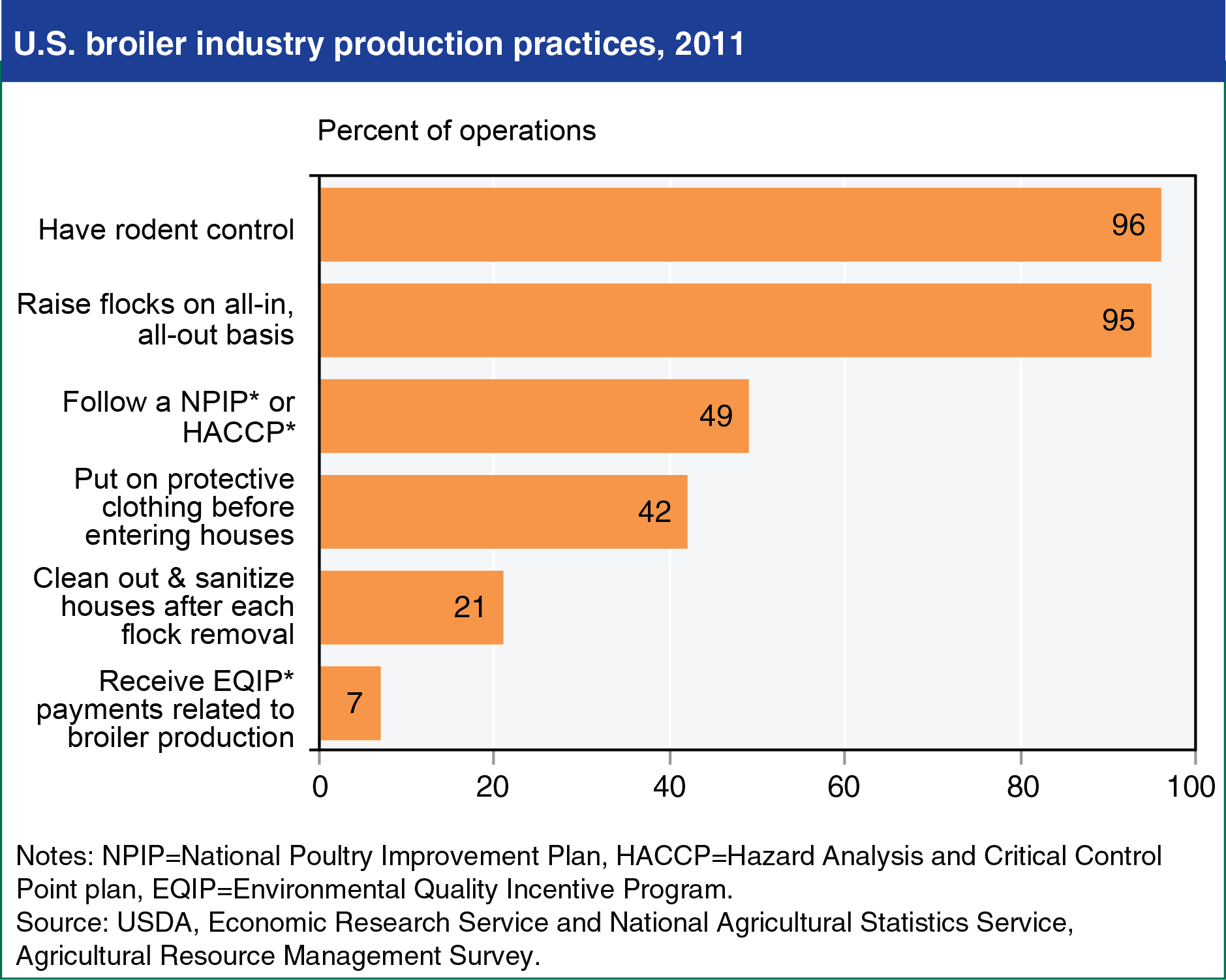Most U.S. broiler operations use some form of sanitation/biosecurity practice
- by James M. MacDonald
- 1/26/2015

USDA’s National Agricultural Statistics Service and Economic Research Service recently conducted the Agricultural Resource Management Survey (ARMS) of the U.S. broiler chicken industry. Results indicate that several sanitation and biosecurity practices were widespread on broiler operations in the United States in 2011. Almost all operations used practices to control rodent and wild bird access to facilities, and almost all rotated flocks on an all-in, all-out basis, aimed at limiting the spread of pathogens and disease among animals. Nearly half of broiler operations reported that they follow the National Poultry Improvement Plan (NPIP) or a Hazard Analysis and Critical Control Point (HACCP) Plan, which are designed to improve animal health, food safety, and food quality. One-fifth of operations fully cleaned out and sanitized their houses after each flock removal. USDA may provide support for incineration and composting facilities, as well as litter management practices, through payments made under the Environmental Quality Incentive Program (EQIP). ARMS results find that seven percent of contract growers received EQIP payments related to broiler production in 2011. This chart is found in the ERS/NASS report, 2011 ARMS - Broiler Industry Highlights.


